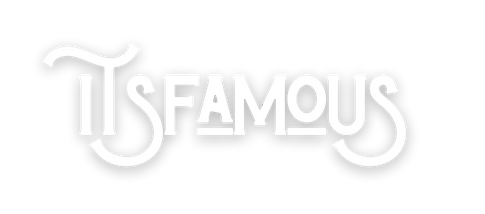Showing More False Bashfulness NYT Crossword Puzzles
If you’re a crossword enthusiast, you know the thrill of piecing together clues to unveil the hidden words. The New York Times Crossword Puzzle is a legendary challenge that captivates solvers of all skill levels. Each puzzle presents an opportunity not only to test your knowledge but also to sharpen your wits and indulge in some delightful wordplay. Today, we’re diving deep into one intriguing clue: showing more false bashfulness nyt. What could it possibly mean? Get ready for an enlightening journey as we decode this clever hint and explore its possible answers!
Decoding the Clue: ‘Showing More False Bashfulness’
When tackling the clue showing more false bashfulness nyt in the crossword, it’s essential to dissect its components. This phrase hints at a nuanced meaning rather than a straightforward definition.
The term “false bashfulness” suggests an act or behavior that feigns shyness or modesty. It prompts solvers to think about synonyms or related expressions that convey this idea.
Wordplay is key here; consider phrases where humility meets artifice. A clever interpretation might lead you towards more playful terms used in everyday conversations.
Remember, clues often rely on cultural references and common idioms, so keep your mind open to various possibilities as you work through them one by one.
Possible Answers for the Clue
When it comes to the clue “showing more false bashfulness nyt,” several potential answers could come to mind. One might instinctively think of synonyms for bashfulness or shyness.
Consider terms like “modesty” or “timidity.” These words hint at a reluctance often tied to behavior, yet they don’t quite capture the nuance of “false.”
Another possibility is “affected,” which points toward an insincere display of hesitation. This aligns well with the idea of feigned modesty.
You may also stumble upon creative phrases such as “putting on airs,” suggesting a deliberate pretense that combines both showiness and false humility.
Each option shines in its own way, but not every suggestion will hit the mark for crossword enthusiasts trying to unravel this specific enigma. The challenge lies in discerning which fits best within the context laid out by other intersecting clues.
Explanation of the Correct Answer
The clue “showing more false bashfulness nyt” leads us to the answer “shyness.”
At first glance, it might seem straightforward. However, the nuance lies in understanding how “false” interacts with “bashfulness.” The term suggests a pretense rather than genuine shyness.
When someone is displaying false bashfulness, they may be acting coy or reserved while seeking attention. This playful contradiction adds depth to the crossword puzzle’s language.
“Shyness,” therefore, embodies that duality—capturing not just introversion but also a hint of performance. Solving this type of clue requires thinking beyond direct meanings and considering wordplay intricacies.
Crossword creators often delight in such layers. They challenge solvers to think creatively about common expressions and idiomatic phrases. That’s where the fun really begins!
Tips for Solving NYT Crossword Puzzles
Approaching the NYT Crossword can feel daunting. Start with what you know. Fill in easy clues first to create a foundation. Look for common patterns or prefixes. Words like “un-” or “re” often appear, helping you unlock more complex answers.
Don’t shy away from wordplay. Puns and double meanings are frequent in these puzzles. A clue might not be as straightforward as it seems.
Use a pencil instead of a pen, especially if you’re new. It allows for adjustments without frustration. Timing is crucial; try not to rush through each section. Take breaks when needed to clear your mind and return fresh.
Consider working with friends or online communities that share your passion for crosswords—collaboration can lead to quicker solutions!
The Importance of Wordplay in Crosswords
Wordplay is the lifeblood of crossword puzzles. It adds an element of surprise and delight for solvers. Each clue can feel like a mini riddle, challenging your brain to think outside the box.
Puns, homophones, and double meanings transform ordinary language into something extraordinary. A phrase might seem straightforward at first glance, but it reveals layers upon closer inspection.
This clever manipulation of words not only entertains but sharpens cognitive skills. Engaging with wordplay enhances vocabulary and encourages lateral thinking.
Crossword creators often draw on cultural references or idiomatic expressions that resonate with solvers. This connection makes each puzzle a shared experience between constructors and players.
For those tackling clues like “showing more false bashfulness nyt,” understanding wordplay becomes essential in deciphering their true meaning. The thrill lies in uncovering these hidden gems within the puzzle’s framework.
Conclusion
Crossword puzzles are a delightful blend of challenge and entertainment, stimulating our minds while providing satisfaction in solving clues. The clue showing more false bashfulness nyt crossword exemplifies the clever wordplay that enthusiasts cherish.
The journey to decipher such clues can be rewarding. Understanding possible answers, like “shyness,” transforms what seems complex into manageable pieces. Recognizing patterns and synonyms is essential for any puzzle solver aiming to enhance their skills.
As you tackle more puzzles, embrace the importance of wordplay. These nuances make every crossword unique and engaging. Keep practicing, stay curious about language, and enjoy each solved clue; it’s all part of the adventure that crossword lovers thrive on.
So next time you’re working on your favorite NYT puzzle or wrestling with showing more false bashfulness nyt, remember: it’s not just about finding answers—it’s about enjoying the process along the way. Happy puzzling!















Leave a comment